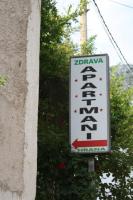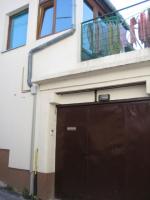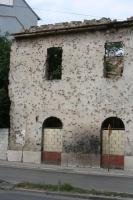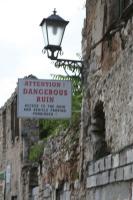Overview
Before we traveled to Bosnia & Hercegovina (“Bosnia”), we knew of it only from the bloody wartime footage we’d seen on TV in the 90s. While we were there, we finally began to understand the specifics of the conflict, which had previously eluded.
In 1991, Bosnia declared its independence from Yugoslavia.  In 1992, the longstanding conflicts between its three ethic groups–the Bosniaks (Bosnian Muslims), the Croats and the Serbs–finally came to a head. The Serbs began a campaign of ethnic cleansing, expelling (often through murder) the Bosniaks from lands that they wanted for themselves. The Croats, who had been fighting for their own share of territory, eventually joined with the Bosniaks as the conflict raged on. Things finally began to calm down when the international community took a belated interest in stopping the bloodshed. Under an agreement engineered largely by the Clinton Administration, the country was divided into two territories: the Bosniaks and the Croats administer 51% of the country, while the Serbs have the remaining 49%.
The depth of the continued division between these ethnic groups is visible even on the road signs: the ones in the Serbian portion of the country are written in the Cryillic alphabet (we had a difficult–and hilarious–time trying to navigate them), while the rest use the Roman alphabet that we’re used to. The tension between the groups was visible most recently during the capture of Radovan Karadzic, a Serb leader charged with engineering the genocide of the Bosniaks.  Bosnian Serbs took to the streets in his defense; many of them still view him as a national war hero.  The two portions of the country obviously still have a long way to go if they want to achieve any sort of political or social union.
Now that the blood-letting is over, however, Bosnia’s tourist industry is growing in leaps and bounds.  In fact, according to a WTO estimate, the country will have the third-highest tourism growth rate in the world between 1995 and 2020.  From Mostar’s famous bridge to the bullet-riddled streets of Sarajevo, there’s so much for tourists to see. Among the sights are graveyards that consist almost entirely of young men killed between 1993 and 1996.  They’re sobering reminders of the conflict, and ones that we’ll remember for a long time.
Blog Entries We Wrote
-
To see all the blog entries we wrote about this country, please click HERE.
Pictures We Took
-
To see some of the pictures we took in this country, please click HERE.
Cities/Areas We Visited
-
Mostar (July 18-19, 2008)
-
Sarajevo (July 19-20, 2008)
Places We Stayed
Mostar
-
Zdrava Hrana Apartments (July 18-19, 2008): We happened upon this place as we were wandering the streets in search of affordable lodging, and it fit the bill perfectly. It was clean, conveniently located and, at about $45 a night, cheaper than anyplace else we found.
Sarajevo
-
Private apartment a few blocks uphill from center (July 19-20, 2008): The staff at Hotel Halvat booked us into this place because their guesthouse was full. At about $60 a night, it was a decent deal–very near the Bascarsija area (the heart of the backpacker scene) and simple, but certainly serviceable. We opted out of the fairly expensive breakfast offered by Hotel Halvat.
Places We Ate
Mostar
-
Restaurant Babilon: Derek loved his heart-attack-on-a-plate-type lunch–a steak topped with cheese and a fried egg–but Shanna’s trout was pretty bad. This riverside cafe has a great view of the Mostar bridge, though. We were lucky enough to be there when a local, bribed by tourists, jumped (safely) from the bridge into the cold waters below.
-
Grill Centar: This cheap, hole-in-the-wall place was full of locals, which is always a great sign. We really liked the cevapcici (sausages served in pita bread) that they served up, and the laid-back atmosphere was great.
Sarajevo
-
Taj Mahal Indian Restaurant: This place satisfied our craving for Indian food, but it was outrageously expensive, given that it wasn’t all that nice.
-
Cevabdzinica Kurto Doner: Derek’s late-night kebab from this place was just ok.
Things We Did
Mostar
-
Walked across Stari Most, the famous bridge that became a symbol of reconciliation when it was reconstructed after the Bosnian war
-
Watched a young local, bribed by tourists, jump (safely) off of Stari Most into the icy waters below
-
Walked around the city, marveling at the still-visible signs of destruction caused by the recent war
-
Visited some local mosques
-
Walked through a cemetery filled with graves of people who died in the recent war
Sarajevo
-
Walked through the old Turkish quarter
-
Saw the Latin Bridge, where Archduke Ferdinand and his wife were shot and killed by a Bosnian Serb, sparking World War I
Country Facts
-
Capital City:Â Sarajevo
-
Currency: Convertible Mark
-
Exchange Rate: 1.25 Marks to $1




























No Responses to “ Bosnia ”